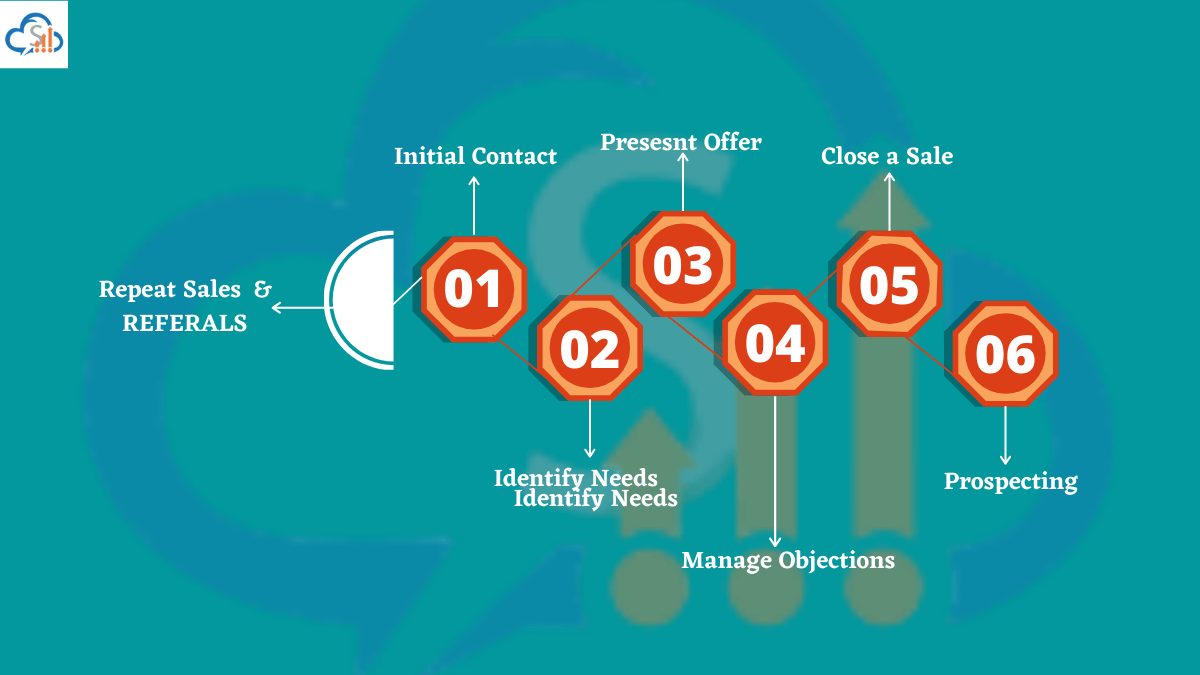Customer Relationship Management (CRM) is very much necessary these days, as every company is engaged in a lot of email communications and follow ups with their customers and enquiries.
CRM software is helping your sales team to communicate and the data is being stored about the discussion update with their customers – for sales, marketing or operation. In the CRM, it’s not only helping salespeople for communication, but also creating the followup task, able to assign tasks. Stages of sales cycle system in CRM helps in automating each and every sales stage, sending the sales pitch, status providing, what actions to be taken and scheduling the follow up. CRM allows to store the communication updates, documents related to the customer and change the stages as and when the case progresses. With the help of CRM customer acquisition and retention is possible.
Sales cycle management, which maintains the track of the leads or opportunities during the sales life cycle and providing the sales pipeline. In the CRM stages of the sales cycle of the customer, his behavior was analysed as per the discussion and managed in the status of the lead or an opportunity.
No matter what company is selling, every sale follows the same pattern. It’s a rare sale that doesn’t include each of these steps in one form or another. Often salespeople don’t think of certain stages as being different events – for example, qualifying often happens as part of the cold call, the sales presentation or both – but each of these stages is, in fact, necessary to advance the sales process.
How to define a Sales Cycle?
Every company undergoes the process of a product selling to the consumer is a sales cycle. During this process all the stages are covered from pitching a product to the customer till the sales closing. Different companies may follow their unique steps of doing the sales, but ultimately the sales process is the same – providing the suitable product and closing the deal.
During the sales, the sales person might feel somewhat different in approaching the customer with a different pattern, but the goal is to make the consumer as your loyal customer. The complete process of a salesperson who is putting his effort, removing the hurdles and concentrating on closing the deal is the stages of sales cycle.
Managers and management are helping the sales team in building strong and productive stages of the sales by managing the sales pipeline and bringing the growth in the sales revenue.
Read our blog
Stages of Sales Cycle – In the CRM sales process is usually followed by a set of steps, which a salesperson is repeating with his leads or prospects in his early stage interactions, while introducing the product or service, creating the interest, providing a suitable product or service and does the closure of the sale. The recurring steps of following up the customers may vary from company to company, but commonly below mentioned stages are the following steps, which majority companies implement.
Scenario 1: You are introducing your product to the executives of a tech company, wearing your best suit and with the most convincing smile. You have spent weeks learning more about this company’s pain points and crafting an argument about how your product can solve those pain points. You have got your slides ready, and if you successfully close the sale, it means thousands of dollars in revenue for your company.
Scenario 2: You have moved across the country for the summer, in between your inexperienced and junior year of college, and now you’re standing at the door of a suburban home. You have documentation about the importance of home security in hand, ready to hand, able to fork out as soon as you knock on the door.
These two salespeople have more in common than you would possibly think. Whatever methods your company depends on, each organization uses the same basic stages of the sales cycle to close deals. A sales cycle is a sequence of events or phases that occur during the selling of a product or service. This article will cover the typical seven steps or stages in the sales process, but remember that not every sale or customer interaction will follow the same path.

Various Stages of Sales:

1. Prospect for Lead:
Prospecting refers to the process of finding new potential customers. Your company might take care of the first part of this process by giving you lead lists to work with, or you might be responsible for finding leads yourself. While doing the lead prospecting stage, every salesperson has to be prepared with the answers for commonly asked questions by the customers.
How is the product better than other competitors are providing?
What is the best offer that can be given if decided to purchase the product?
How will the support after sales be provided?
A salesperson has to put his foot into the clients shoes and think like him – how the product or service will be benefiting his business and help them to generate more potential customers. Once you have the answers to the queries raised by the customer, then it’s a go ahead and start prospecting.
2. Set an Appointment:
Once those leads collected in stage one have been identified as prospects, now the next stage to contact. Here the communicating channel to be used may vary depending on the business process and the prospective lead. Many salespeople prefer to cold call,use social media or even mail out sales letters. Few cases of a phone call will be better, while sometime through an email or sending a sales pitch. It is only for getting an appointment for the formal meeting. Sales Cycle Management will help to keep track of the follow ups done with the customers, during this sales cycle process.
3. Qualify the Prospect:
While doing the process of follow ups with the customer, aim is to have his willingness. The idea is to confirm that the prospect is both able and potentially willing to buy the product. The salesperson has initiated initially while in the prospecting stage of the sales cycle. Majority of time the prospect is getting qualified when there is a first onsite sales meeting done. Here the time is saved and the salesperson is able establish the contact with the decision maker. In the meeting able to decide whether the customer is in position to decide to procure the product or not.
4. Make Your Presentation:
After the sales person has identified his lead as a prospective customer by establishing the contact and getting the willing in the product, then now its a presentation to be given. The presentation is the core of every sales cycle, and it’s probably where you’ll invest the most preparation time and quotation provided. The aim of a salesperson is to provide the product suitability as per the customers requirement and any queries related to the product – either features or issues in understanding the product to be well explained and achieving the confidence from the customer.
Keep in mind that the salesperson during the presentation has to follow the etiquettes like having the presentable body language, well mannered while greeting the customer and with a pleasant appearance.
Read our blog
5. Address the Prospect’s Objections:
Here the salesperson’s responsibility is increasing and introducing the senior manager or superior’s in the meeting with the consent of the customer. In the process of sales cycle management, able to manage and decide how to overcome hesitation of the customer. Objection or hesitation can actually be a positive sign, since they mean that the prospect is at least considering buying or he wouldn’t be bothering to acknowledge and work out his problems.Here’s where salesperson get to deal with his prospect’s concerns.
6. Close the Sale:
After going through all the various stages, now the moment is close to the sale grabbing process. It will be depending on the preceding stages in the past the salesperson has followed in his sales process. Here the salesperson has made his presentation and answered all the prospect’s questions and objections, it’s time for a stage of negotiation. Here the sales cycle is still in progress, until a sale is closed or dropped by the customer.
The sales cycle stages keep changing as per the prospect responses. These prospects are seen in the sales pipeline for a few hours or few days or a couple of months. Every salesperson has to pass the stages of the sales cycle as mentioned in the “Various Stages of Sales”.
Conclusion
An effective CRM Software enables to sort out the qualifying leads. It registers all enquiries with complete details of the client and its conversations. It enables setting reminders for necessary follow-ups and can assign tasks to the most efficient team member, so that lead can be converted into sales. SalesBabu brings a CRM system that provides the chain of benefits. It captures the maximum information of the customer’s requirement. The CRM can manage multiple contacts for a customer and it helps to record the complete business conversation with remarks or notes.
In the SalesBabu CRM, sales cycle management is a technique that will streamline the sales team, sales productivity helps to increase the sales revenue and have business growth.













